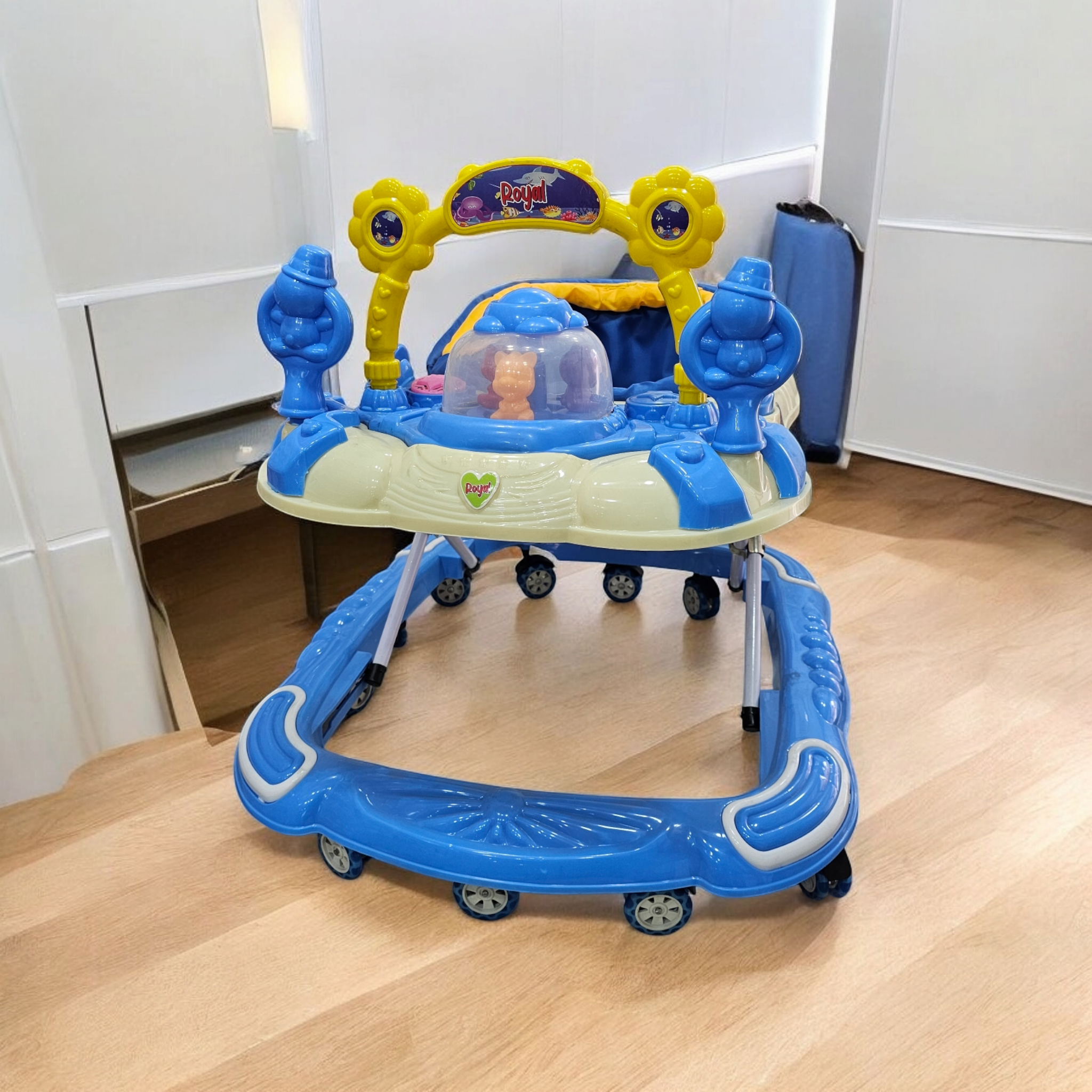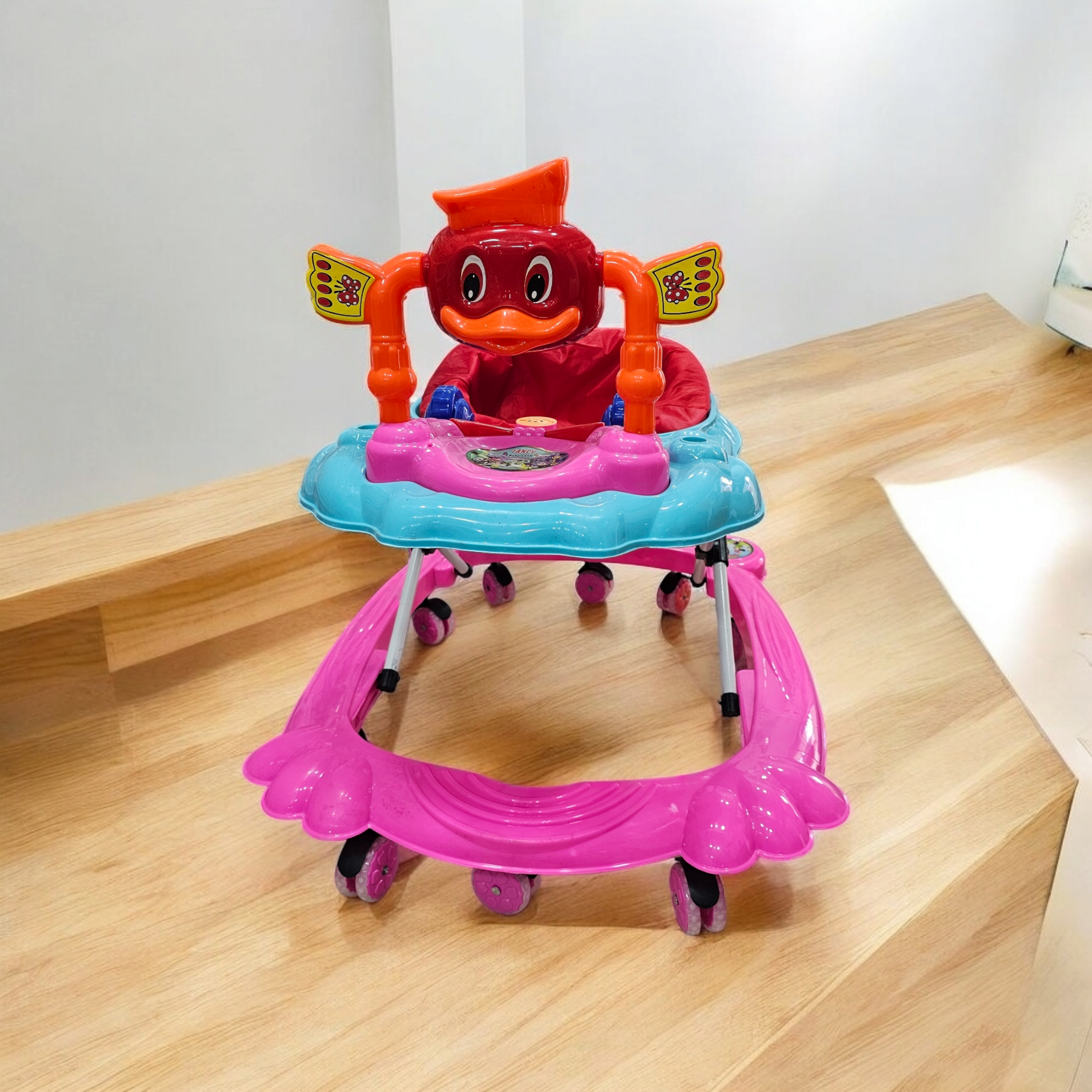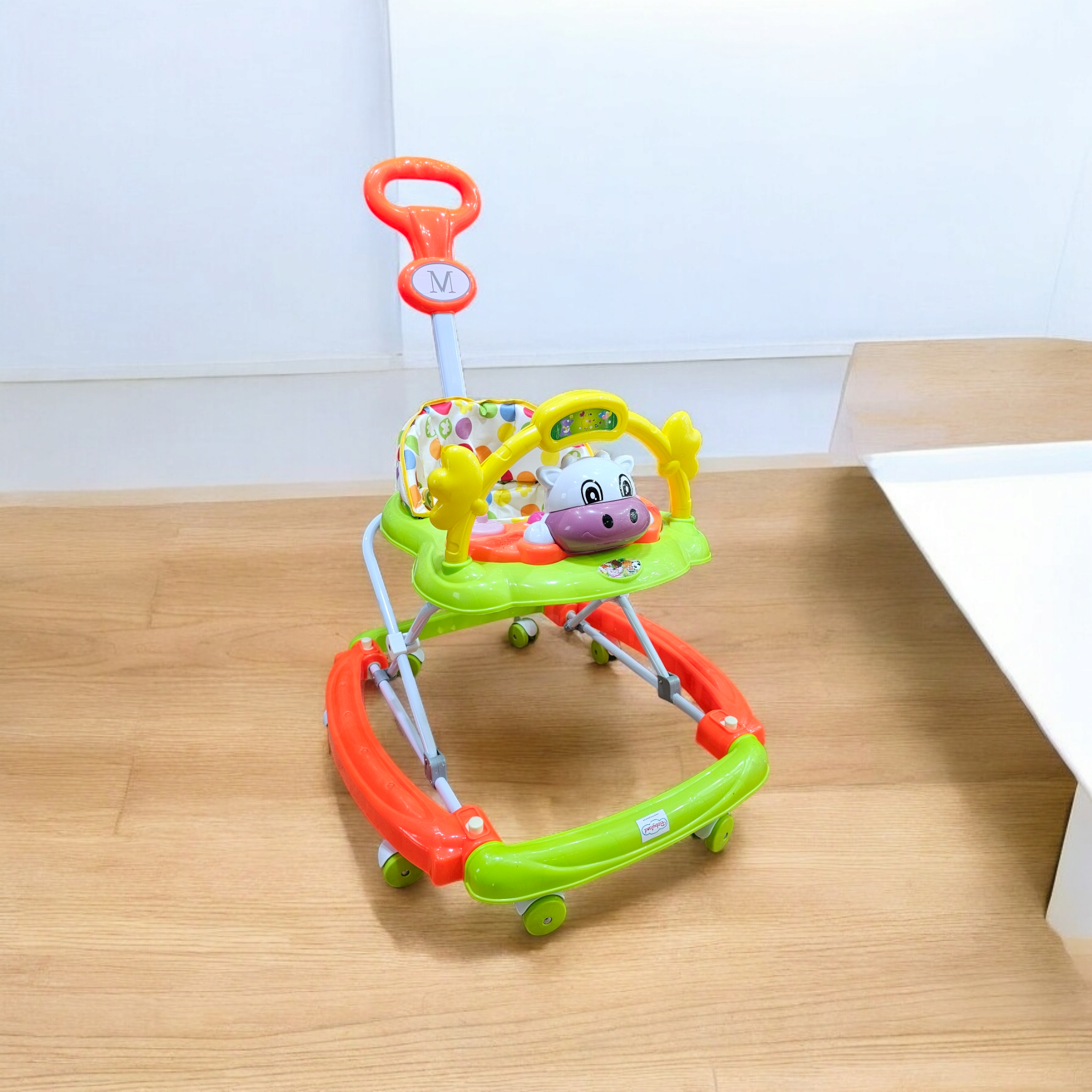Description
A baby walker is a tool used to assist babies as they learn to walk. It typically features a frame with wheels and a seat that allows the baby to sit in it and move around by pushing with their feet. Baby walkers come in a variety of styles, including basic models and more elaborate ones with additional features, such as toys or activity trays to keep the baby entertained.
Main Types of Baby Walkers:
-
Traditional Baby Walker: These are basic models that offer a seat and four wheels to help the baby move. They might not have much else in terms of toys or activities but serve the primary purpose of mobility assistance.
-
Activity Baby Walkers: These walkers have additional features, such as built-in toys, music, or light-up elements, to engage babies while they sit in the walker.
-
Convertible Walkers: Some walkers can also transform into other items, like a rocker or activity center. These offer extra value as the baby grows.
-
2-in-1 Rocking and Walker: These provide dual functionality by offering both a rocking motion for younger babies (before they start walking) and a walker mode when they’re ready to explore standing and walking.
Benefits:
- Helps Mobility: Walkers allow babies to move around and explore their environment while developing leg strength and coordination.
- Entertainment: Many models come with built-in toys, which can help keep your baby entertained and mentally engaged.
- Encourages Movement: It helps babies practice their walking and leg muscles, though it should not replace crawling and independent walking development.
Safety Considerations:
- Supervision: Always keep a close eye on babies in walkers. They can move quickly and may end up in dangerous places (like stairs or near hazards).
- Appropriate Age: Follow the manufacturer’s age and weight guidelines to ensure the walker is safe for your baby.
- No Stairs: Be cautious around stairs. Some walkers are designed to be safe on flat surfaces, but they can still roll toward stairs if not closely watched.





